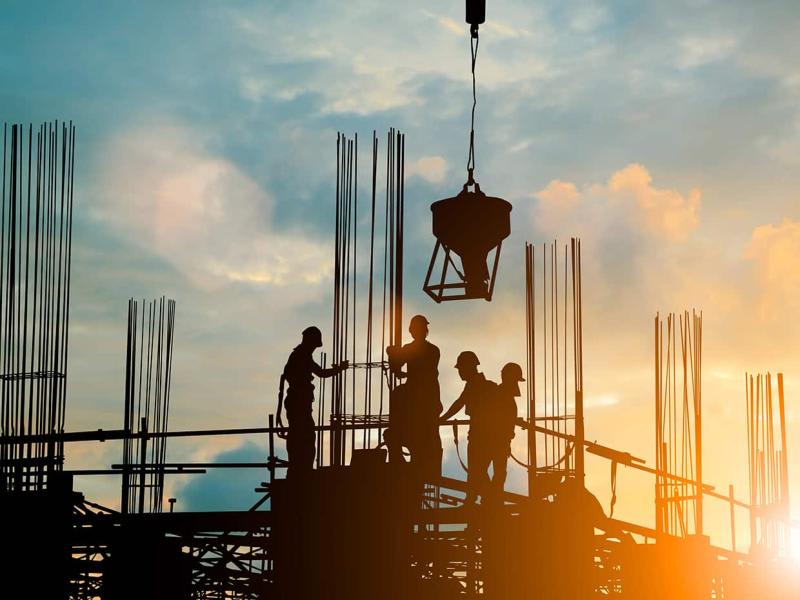Key takeaways
In our final article on real estate trends in the Asia Pacific region, we take a look at how technology and innovation are evolving developments and the sector as a whole. If you missed the first two articles, you can find them on our Real estate and construction page or through the links below:
- How remote and hybrid working is affecting real estate in Asia Pacific
- Navigating the green horizon: The real estate response to ESG in Asia Pacific
In real estate and construction, technological advancements in PropTech (Property Technology) are ushering in a new era of efficiency and sustainability in the Asia Pacific region. From Artificial Intelligence (AI)-driven site planning to Internet of Things (IoT)-enabled facilities management, developers are leveraging cutting-edge tools to optimise every stage of the development process. Online tools streamline viewing, bidding, and transactions, enhancing accessibility and efficiency. Digital platforms facilitate seamless connections between agents and buyers, offering comprehensive property listings and immersive virtual tours. While challenges persist in regions reliant on paper-based transactions, innovative technologies like 3D printing and modular construction drive efficiency and sustainability, shaping a more accessible and environmentally conscious real estate landscape.
Revolutionising the buying and selling experience
PropTech is reshaping how property developers and buyers interact during the viewing and bidding process, offering more ways to interact than ever. As Dennis Lee, Partner at RSM Singapore, said, “The post-pandemic adoption of PropTech introduced online tools to help with customer viewing, bid management and transactional processing, as well as the administration process.”
This shift towards digital platforms enhances convenience and efficiency for all parties involved, marking a significant evolution in real estate transactions. According to Kengo Maekawa, Founder and CEO of RSM Shiodome Partners in Japan, “The proliferation of the internet and social media has prompted a strong online presence within real estate, with real estate agents and potential buyers now being able to efficiently connect through digital property advertising. Many websites and apps provide property listings with photos and video tours, making properties accessible online.” As many buyers and renters will already know, in recent years, there has been an explosion of property apps and websites that host property listings and have become a mainstay in the sector. These viewing portals, in addition to photos and video tours, often include 3D reconstructions of the property to tour or even panoramic images to allow potential buyers to view the space as if they were there.
Maekawa continues: “Big data analysis and AI support decision-making in pricing properties, predicting market trends, and profiling potential buyers by leveraging vast datasets and sophisticated algorithms. By analysing historical sales data, market trends, and consumer behaviour patterns, AI enables real estate professionals to make data-driven decisions with confidence.” And, on the buyer side, as Maekawa says, “AI can even recommend suitable properties based on preferences, using personalised algorithms to match buyers with properties that align with their unique criteria and preferences, ultimately enhancing the overall buying experience.”
“However,” Maekawa adds, “it is worth noting that in Japan, real estate transactions still rely on paper-based processes, which may slow the adoption of new technologies. Nevertheless, there is potential for future integration to streamline the process further.”
Innovations in construction: Driving efficiency and sustainability
PropTech is also innovating real estate from a property’s inception, driven by technology designed to enhance operations, speed up processes, reduce costs and risks, and improve a project’s final outcome.
“3D printing (3DP) technology championed by companies such as Luyten reduces up to 60% of construction waste, 70% of production time and up to 80% of labour costs when compared to hands-on construction projects,” says Adam Crowley, National Leader for Property and Construction at RSM Australia. He continues: “The world’s largest mobile 3D smart AI-powered concrete printer, Platypus X12 (owned by Luyten), built the first ever 3D printed house in the southern hemisphere in Melbourne, Victoria in 2021 and by 2030, around 30-50% of housing in Australia’s outback, regional and remote areas, will be built using 3D printing technology.”
Adding to this, Keith Tan, Business Consulting Director at RSM Singapore, said, “From the developer standpoint, technology that uses AI and IoT is transforming how site planning, inspections and surveys are done. Geospatial imaging also plays a crucial role in optimising land-use planning and development strategies by providing detailed insights into terrain features, environmental factors, and infrastructure accessibility. By leveraging this technology, developers can maximise development returns and minimise the environmental impact on surrounding areas, ensuring sustainable growth and harmonious integration with the local ecosystem.”
“There have also been other new technologies such as modular construction, which has allowed controlled off-site construction, significantly reducing production times,” says Crowley. He continues, “Australian-based construction company Hickory is pioneering this approach on modest high-rise projects located on narrow land blocks, contributing to an expected growth from 5% to 15% in the Australian prefabricated construction industry by 2025.”
Real estate of the future
These innovations represent just the tip of the iceberg in a transformative era for real estate and construction. Advanced technological capabilities are enhancing the buying/selling experience, and faster construction times with significantly reduced costs translate into more affordable properties, opening doors for a broader range of prospective buyers. And as Lee states, “In the area of facilities management, we can see more widespread adoption of remote monitoring using surveillance equipment mapped to IoT capabilities to monitor consumption patterns, utility and energy usage, and plan for ad hoc maintenance and repair works.”
Moreover, the emphasis on sustainability and eco-friendly construction methods not only reduces waste but also resonates strongly with environmentally conscious buyers. Investing in properties built with sustainable materials and practices aligns with their values, making such properties increasingly desirable in the market and fostering a more environmentally friendly real estate landscape for the future.
For more information on real estate or how RSM can help your business, please visit our Retail and construction page.








